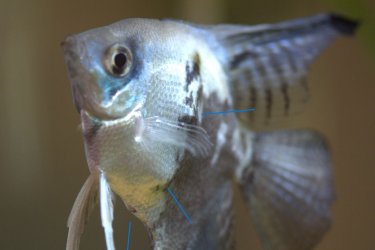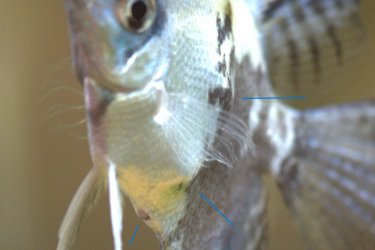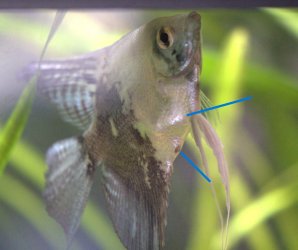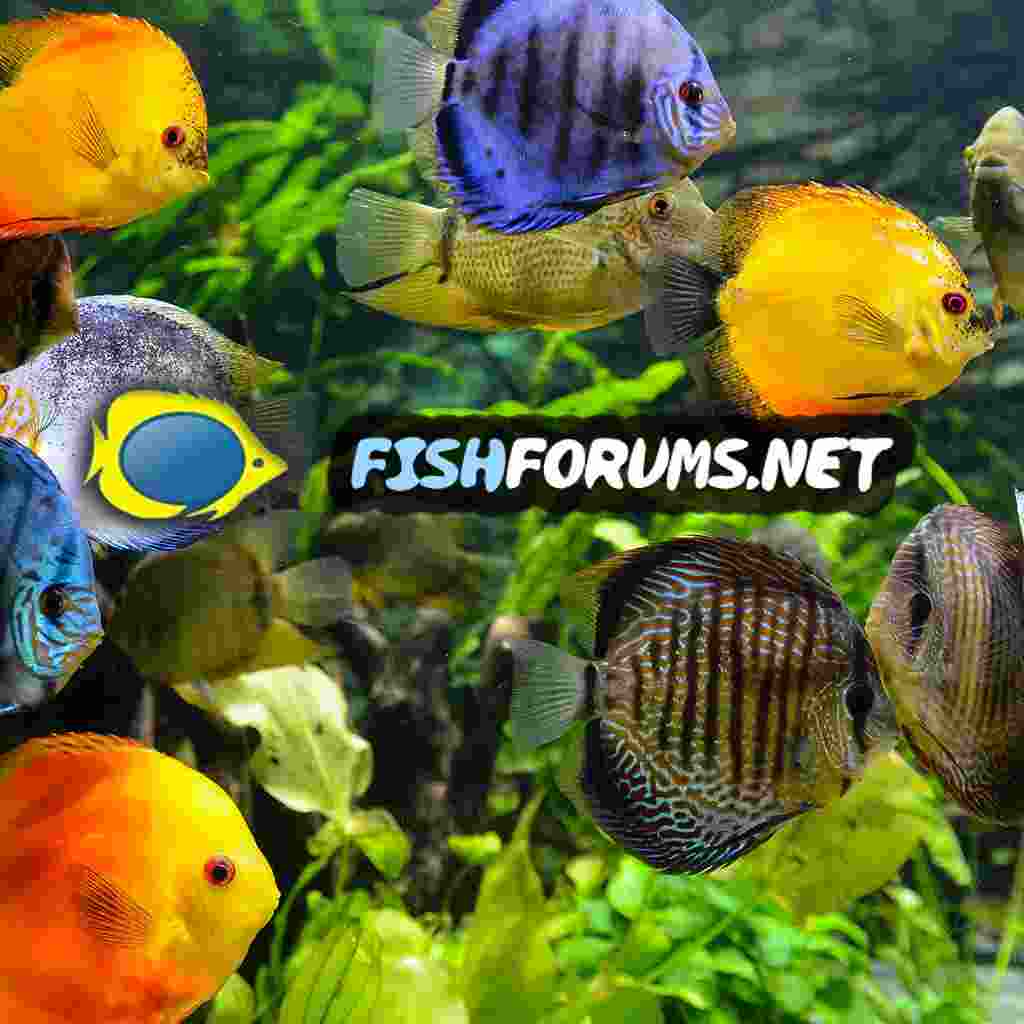Uberhoust
Fish Herder
I do not have a lot of experience with fish diseases but don't add to my collection frequently so for the most part have lucked out.
I have a single angel fish, Miss Blue, from my second breeding, who is showing some strange growths in the general abdomen area of her body. In particular there are to bumps left and right low on the abdomen, and one higher on the left just below the lateral line. She is the mate, most of the time, to the dominant male in the tank, though, lately another female has taken that role. The growths are progressing slowly, and I have been monitoring her for about three months now. About two months ago I thought she might be egg bound but then she bred with the dominant male, but the swellings did not go away. At that time I thought maybe Camallanus infection, so started the process of trying to source the medicine, very difficult. I have the medicine now, but I am not entirely sure of my diagnosis and don't want to subject her or her tank mates to the treatment if the diagnosis is not correct. None of the other fish are showing similar, or any issues, additionally Miss Blue is not showing any behavioral issues other than the last breeding did not involve her (this happens from time to time). She is at the top of the tank for all the feedings, is still the most dominant female in the tank, and still one of the more friendly fish, and doesn't show any worms protruding from her anal vent.
Miss Blue, is one of 8 related angels that live with a female guppy, ember tetra, and a couple of black neon tetras, as well as ramshorn and nerite snails in a 75 gallon tank. Filtration is provided by a fluval 407 running full flow. Typical foods include Tetra Min, Bug Bites, Frozen Bloodworms, and occasionally mosquito larva when available. The tank is planted, has a fine gravel substrate and gets a 60 to 70 percent water change every two weeks. Ammonia is at 0, as is Nitrite, Nitrate varies between 5-10 ppm, ph 6.8-7.2, GH 2-3. The fish are not overfed (in my opinion getting feed 5 times a week). If it is Camallanus the only route I can see is from the female guppy that I couldn't find a home for when I had cherry shrimp, though she appears to be totally healthy.
I am hoping for some thoughts on the possibility of Camallanus or not that some other possibilities. Blue lines indicate areas with bumps or the vent area not showing any nematodes.
I have a single angel fish, Miss Blue, from my second breeding, who is showing some strange growths in the general abdomen area of her body. In particular there are to bumps left and right low on the abdomen, and one higher on the left just below the lateral line. She is the mate, most of the time, to the dominant male in the tank, though, lately another female has taken that role. The growths are progressing slowly, and I have been monitoring her for about three months now. About two months ago I thought she might be egg bound but then she bred with the dominant male, but the swellings did not go away. At that time I thought maybe Camallanus infection, so started the process of trying to source the medicine, very difficult. I have the medicine now, but I am not entirely sure of my diagnosis and don't want to subject her or her tank mates to the treatment if the diagnosis is not correct. None of the other fish are showing similar, or any issues, additionally Miss Blue is not showing any behavioral issues other than the last breeding did not involve her (this happens from time to time). She is at the top of the tank for all the feedings, is still the most dominant female in the tank, and still one of the more friendly fish, and doesn't show any worms protruding from her anal vent.
Miss Blue, is one of 8 related angels that live with a female guppy, ember tetra, and a couple of black neon tetras, as well as ramshorn and nerite snails in a 75 gallon tank. Filtration is provided by a fluval 407 running full flow. Typical foods include Tetra Min, Bug Bites, Frozen Bloodworms, and occasionally mosquito larva when available. The tank is planted, has a fine gravel substrate and gets a 60 to 70 percent water change every two weeks. Ammonia is at 0, as is Nitrite, Nitrate varies between 5-10 ppm, ph 6.8-7.2, GH 2-3. The fish are not overfed (in my opinion getting feed 5 times a week). If it is Camallanus the only route I can see is from the female guppy that I couldn't find a home for when I had cherry shrimp, though she appears to be totally healthy.
I am hoping for some thoughts on the possibility of Camallanus or not that some other possibilities. Blue lines indicate areas with bumps or the vent area not showing any nematodes.







